It is possible to operate Sheaumann’s diode laser pumped 2.94 µm Er:YAG MIR-Pac laser product1,2 in the quasi-continuous-wave (QCW) pulsed mode of operation. This mode is often referred to as normal-mode or long-pulse operation, and involves the laser being operated with pulse durations that are of sufficient length for the laser to reach its steady-state operating condition. This article explores the characteristics of this useful mode of operation.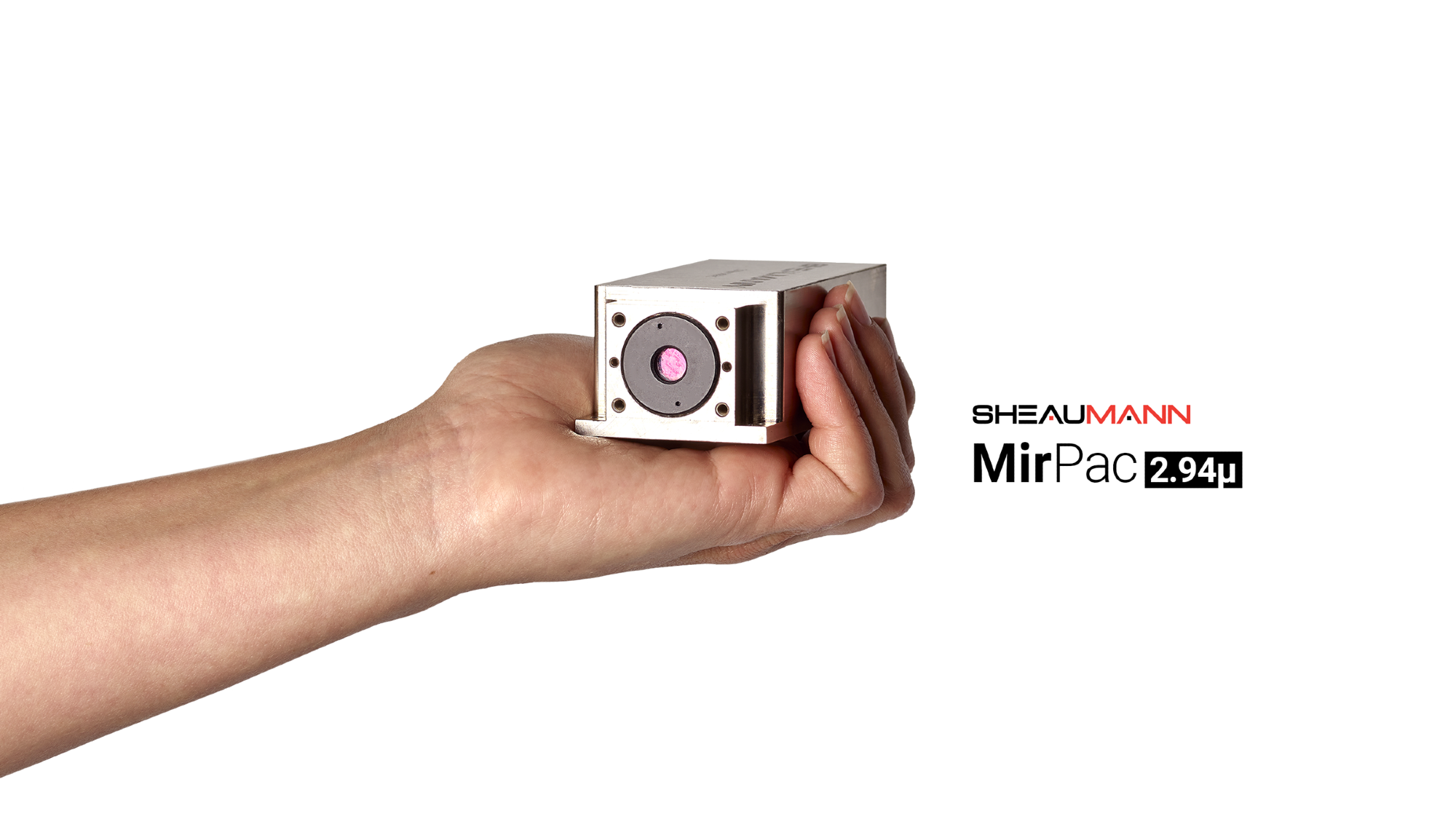
In its continuous operating mode the MIR-Pac laser has been specified for operation at 0.75 W of output power in a TEM00 mode beam (M2<1.2) with a typical beam divergence of 17 mrad. While it is specified at 0.75 W of output power, the laser is generally able to operate at output powers on the order of 1 W (Figure 1) with a maximum pump laser continuous drive current rating of 6 A.
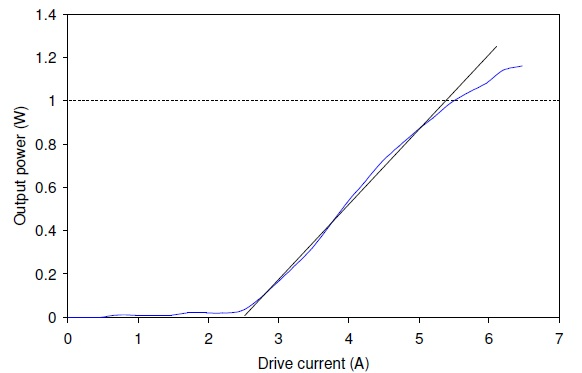
Figure 1. Output power versus drive current performance of a 2.94-μm MIR-Pac laser. Image Credit: Sheaumann Laser, Inc.
The MIR-Pac laser is optically pumped using a diode laser. This diode laser can be pulsed or operated continuously using an appropriate drive current waveform. Driving the diode laser with a rectangular current pulse with rise times <10 µs means that the corresponding optical pump pulse can efficiently create a population inversion exceeding the lasing threshold.
The finite build up time needed to reach the lasing threshold leads to initial population inversion density that is larger than the threshold inversion density by the time lasing begins. Excess gain then results in the generation of a short laser pulse, depleting the population inversion. This process repeats itself several times.
These initial laser pulses are commonly referred to as being gain switched. The generation of gain switched pulses rapidly yields to damped intensity oscillations often known as relaxation oscillations. These then cease as intensity reaches a steady-state value (Figure 2 and Figure 3).
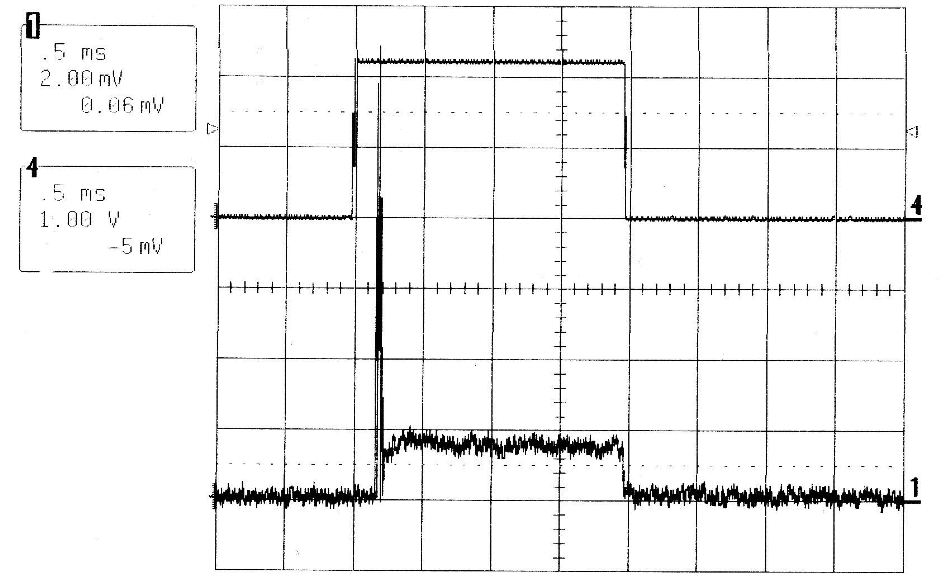
Figure 2. QCW MIR-Pac laser output (lower trace) and drive current waveform (upper trace) for a 0 A to 10 A, 2-ms duration current pulse at a 100 Hz repetition rate. Image Credit: Sheaumann Laser, Inc.
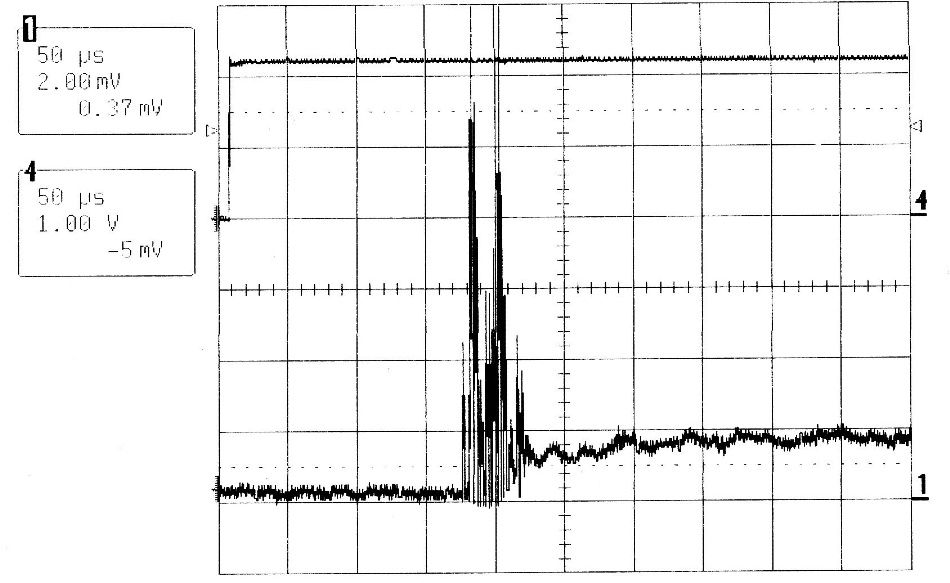
Figure 3. QCW MIR-Pac laser output (lower trace) and drive current waveform (upper trace) corresponding to the first 0.5 ms of Figure 2. Image Credit: Sheaumann Laser, Inc.
Once the optical pump pulse has finished, most lasers will turn off with a monotonic decrease in intensity. However, the MIR-Pac laser turns off by emitting a series of decaying relaxation oscillations (Figure 4). These oscillations are of the same type as those at the beginning of the QCW laser pulse, occurring because of the unique pumping dynamics of the gain medium, Er:YAG.3,4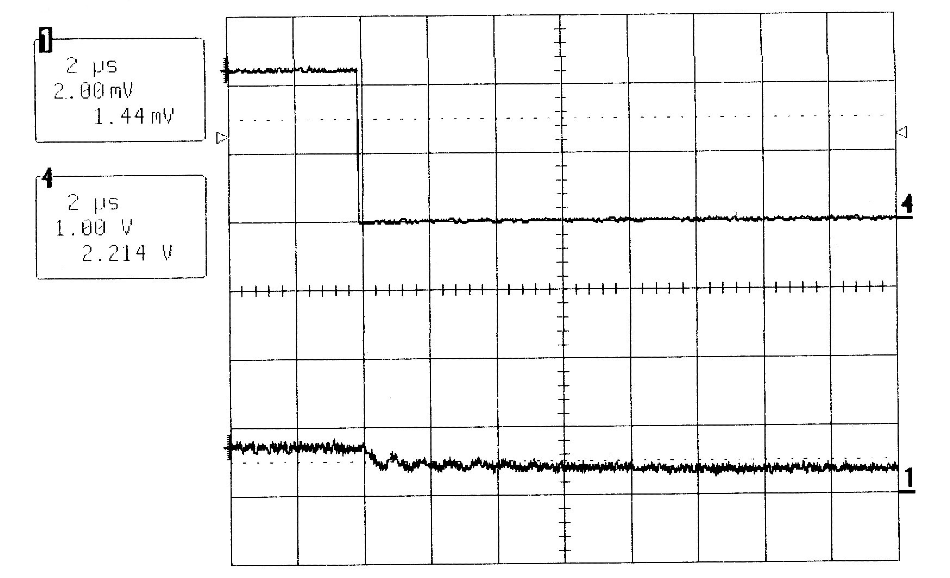
Figure 4. QCW MIR-Pac laser output (lower trace) and drive current waveform (upper trace) showing the relaxation oscillation decay at the end of the laser pulse. Image Credit: Sheaumann Laser, Inc.
Figure 5 displays a series of pumping dynamics. Here, the 6.4 ms lifetime of the lower laser level (4I13/2) is far longer than the 0.1 ms lifetime of the upper laser level, (4I11/2). This would lead to self-saturation if not for the strong upconversion from the lower laser level, which depletes its population while simultaneously providing greater than unity quantum efficiency.
One issue with the upconversion process can be seen when the laser turns off. In this instance, the 4I11/2 level continues to be populated following termination of the pump pulse, leading to the generation of a series of decaying relaxation oscillations, similar to those at the beginning of the laser pulse. Figure 5 illustrates the energy level dynamics in Er:YAG as this takes place.
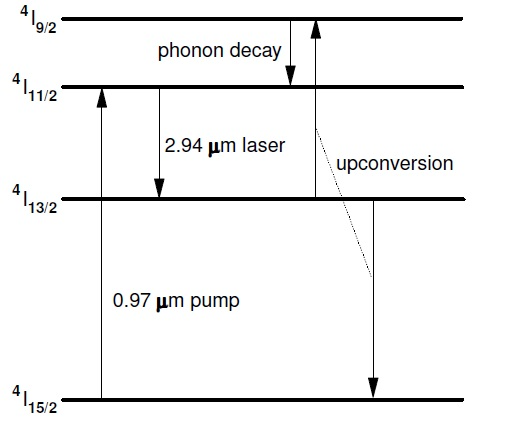
Figure 5. The energy level diagram for Er:YAG showing the pump absorption and laser transitions. Upconversion from the lower laser level, 4I13/2, provides greater than unity quantum efficiency. Image Credit: Sheaumann Laser, Inc.
The relaxation oscillation damping time (τ0) of an ideal four level laser5 is given by

Here, the characteristic lifetime of the upper laser level (τ) is modified by the ratio of population inversion density at threshold to the total number of active ion sites in the pumped region of the gain medium, Nth Nt, and the number of times the optical pumping rate exceeds the lasing threshold, Wp Wp,th.
It can be clearly seen that pumping harder reduces the relaxation oscillation damping time, and this is the case with the MIR-Pac 2.94-µm Er:YAG laser despite its energy level dynamics not being identical to those of the ideal four level laser.
Pumping the MIR-Pac laser just below its lasing threshold before the main pumping pulse will shorten the relaxation damping time, almost wholly eliminating the build up time delay (Figure 6). The most ideal pulsed drive current for QCW operation of the MIR-Pac laser is made up of a continuous bias current set to 80% of the continuous lasing threshold value (generally 2 A), along with a larger pulsed drive current.
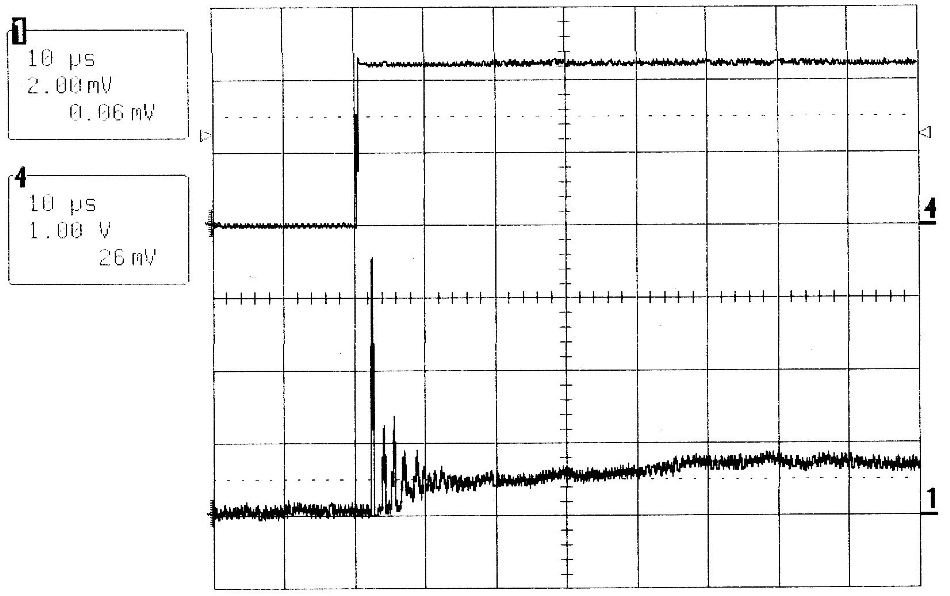
Figure 6. QCW MIR-Pac laser output (lower trace) and drive current waveform (upper trace) for a 2 A to 10 A, 2-ms duration current pulse at a 100 Hz repetition rate. Image Credit: Sheaumann Laser, Inc.
Peak drive current can be as high as the 15 A maximum permitted drive current of the diode pump laser, with the added restriction that the duty cycle corrected average MIR-Pac laser output power is not higher than the specified maximum operating power specified in the device’s test data sheet.
Ultimately, the MIR-Pac laser’s pulsed peak power capability is limited by the same thermal fracture mechanism as in continuous operation. For the current product this is specified at 0.75 W, with typical maximum operating powers as high as 1 W (Figure 1).
Therefore, the corresponding recommended peak power limit for quasi-continuous operation at a duty cycle of 10% -1 ms pulses at a repetition rate of 100 Hz - would be specified at 7.5 W.
The pump diode laser in the standard MIR-Pac laser product is, in practice, limited to a maximum drive current of 15 A. This corresponds to peak powers approaching 4 W at 2.94 µm.
Figures 7 and 8 show data demonstrating the generation of up to 2.5 W peak powers in QCW operation at 10 A peak drive current. This is occurring while generating millisecond regime pulses at pulse repetition rates up to 600 Hz, with corresponding pulse energies up to ~5 mJ (2 ms pulses at 200 Hz).
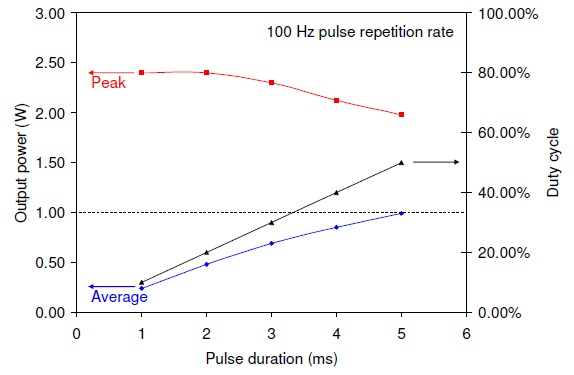
Figure 7. QCW laser performance at a fixed pulse repetition rate of 100 Hz for 8 A drive current pulses superimposed on a 2 A continuous bias current. Image Credit: Sheaumann Laser, Inc.
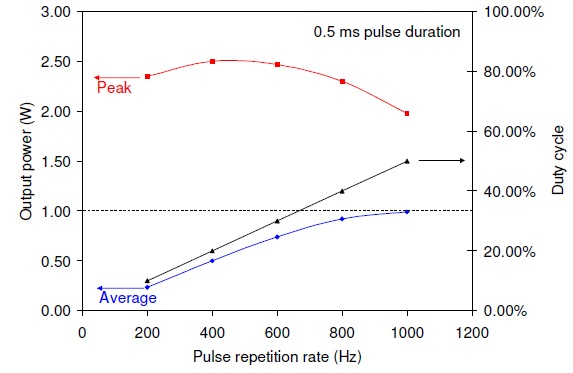
Figure 8. QCW laser performance at a fixed pulse duration of 0.5 ms for 8 A drive current pulses superimposed on a 2 A continuous bias current. Image Credit: Sheaumann Laser, Inc.
Here, the average power limit is only reached at duty cycles around 50% and pulse peak powers as high as 2 W. Corresponding pulse energies in these examples are at 1 mJ at 1 kHz.
Users must be careful to ensure that any electronics used to deliver pulsed or continuous drive currents to the MIR-Pac laser do not include any positive or negative switching transients exceeding the safe operating limits of its internal pump diode laser. It is not possible to safely apply negative voltage - continuous or pulsed - to the laser. Furthermore, positive drive currents - continuous or pulsed - should not exceed 15 A.
Average heat loads of the MIR-Pac laser under QCW operation may be considerably less than those at continuous operation, depending on the specific duty cycle of the pulse modulation format. Because of this, the pump diode laser operating wavelength will drift from the optimal pumping wavelength.
Under QCW operation, users may need to alter the temperature set point of the MIR-Pac laser’s pump diode laser in order to attain maximum average and peak output powers for their particular pulse modulation format.
While it is possible to isolate the first gain switched laser pulse found at the beginning of the relaxation oscillations by using a short duration pump pulse, this method is not considered to be a reliable means of generating a short duration output pulse.
Build up times of the first gain switched laser pulse and the next pulse are extremely sensitive to QCW laser performance at a fixed pulse duration of spontaneous emission conditions that drive the lasing process. Because of this, the timing jitter of the first and second gain switched laser pulses are on the order of the time interval between them.
The net result in these circumstances is the generation of one, or occasionally even two pulses with a timing jitter of several hundred nanoseconds.
References
- http://www.sheaumann.com
- D. Chen et al., “Diode-pumped 1-W continuous-wave Er:YAG 3-µm laser,” Opt. Lett., 24, 385, (1999).
- R.C. Stoneman and L. Estrowitz, “Efficient resonantly pumped 2.8-µm Er3+:GSGG laser,” Opt. Lett., 17, 816, (1992).
- S. Georgescu and O. Toma, “Er:YAG three-micron laser: performances and limits,” IEEE. Sel. Top. Quant. Electron., 11, 682, (2005).
- J.J. Zayhowski, D. Welford and J. Harrison, “Miniature Solid-State Lasers,” Chapter 10, The Handbook of Photonics, second edition, CRC Press, 2007.
Acknowledgments
Produced from materials originally authored by Gary Sousa and Josh Foster from Sheaumann Laser, Inc.

This information has been sourced, reviewed and adapted from materials provided by Sheaumann Laser, Inc.
For more information on this source, please visit Sheaumann Laser, Inc.